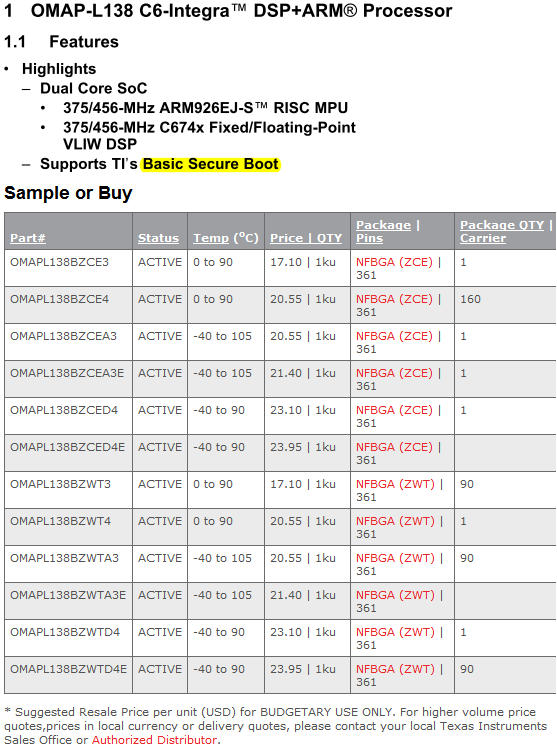Hi,
I would like to ask a question on AM1808.
OMAP L138 has Security Boot feature, according to description:
OMAP-L138 C6-Integra TM DSP+ARM ® Processor, SPRS586c said:The boot modules themselves are encrypted while sitting in external non-volatile memory, such as flash or EEPROM, and are decrypted and authenticated when loaded during secure boot.
For AM1808 where Security Boot is NOT equipped, how to protect code security? If the code is stored on flash, is there a way to prevent the code from being read by malicious attempts?
I believe the need for code security is common among customers, so is there a standard/common method? Could TI recommend one for AM1808 applications?
Zheng

